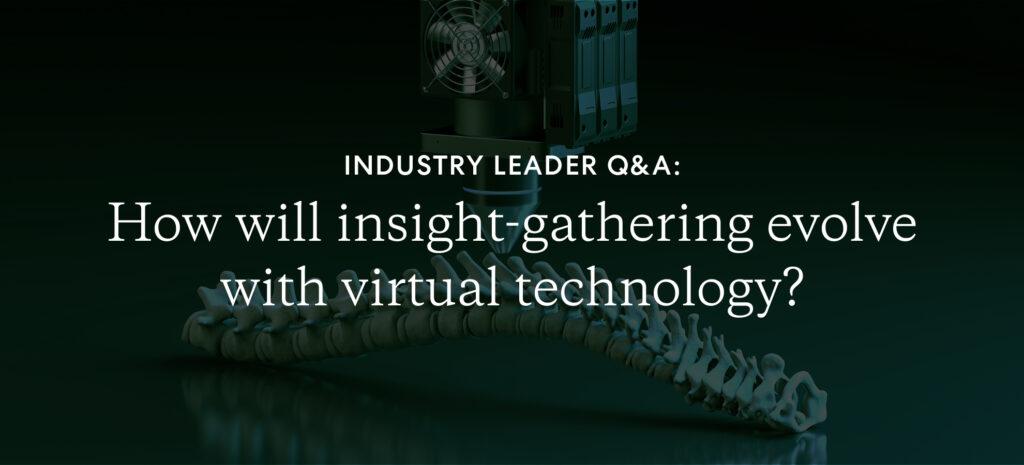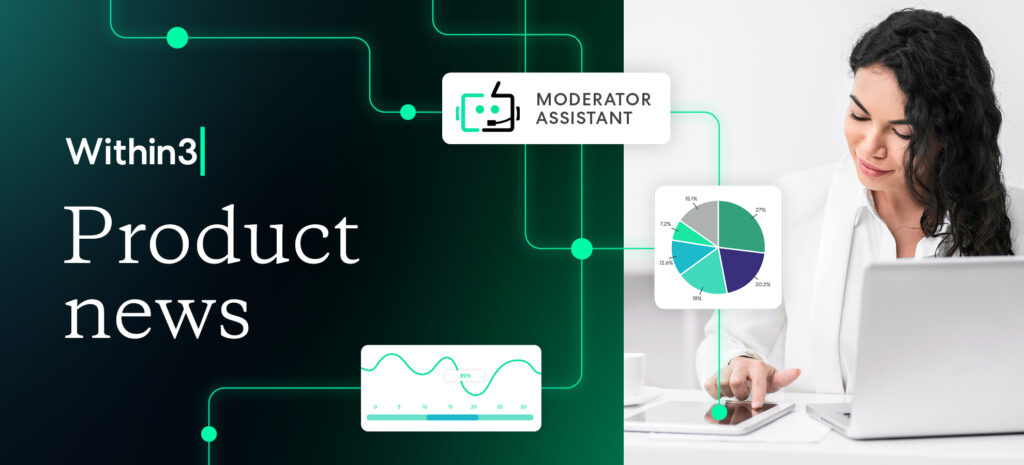In the last two and a half years, the medical device industry navigated a global crisis by accelerating its adoption of virtual engagement and other digital tools. As in-person events resume, many people are left wondering how they can once again get the benefit of face-to-face interaction while continuing to reap the benefits of virtual collaboration.
The answer may lie in knowing which digital technology to apply to different types of interactions, and how to combine the right mix of collaboration – in-person, live virtual, and asynchronous virtual – to get the most value from any type of engagement.
At the Precision Clinical and Medical Device Summit, Within3’s Kim Hale sat down with Dr. Bryce Portier, Associate Vice President of Medical Affairs at Agilent Technologies, to discuss how some life science organizations are using technology to navigate an increasingly multi-channel insight-gathering landscape.
Kim Hale: What were some of the challenges you were facing as the pandemic began, and did an asynchronous, over-time discussion platform make some sense to help solve some of these challenges?
Bryce Portier: As we all know, COVID took us by surprise. And while we had partially moved to do more virtual engagements, we were still predominantly a face-to-face organization for all of our different activities. However, with COVID and the restriction of travel, we had to maintain our planned activities and navigate future activities. We knew that moving to 100% virtual was going to be challenging and that we might not be able to reproduce exactly the time that you can spend when you’re in person. We needed to find a solution that actually allowed us to get more out of our virtual engagements.
Kim Hale: Were there any trepidation or question marks as you moved to a virtual approach? Were you wondering – will this really work?
Bryce Portier: We had some trepidation, but fortunately, when you get thrown into a scenario where you don’t have a choice, you have to take the leap. So we jumped in to try to really enrich our new mode of operation, which was virtual. And what we’ve been able to do is bring our virtual engagements up to the level of our in-person engagements.
Kim Hale: Do you believe that a virtual engagement or a hybrid virtual engagement model can be just as meaningful, if not more meaningful, than in-person interactions?
Bryce Portier: I’m sure anyone who runs advisory boards knows that conversation gets dominated by the people who like to speak the most. And with other speakers, it can be challenging to get information from them, even though their opinions might be very critical to get – but you don’t hear from them. And so I think that’s why virtual engagement can be as meaningful as face-to-face.
I’ll give a caveat: There is value in face-to-face, and we’re all glad that certain face-to-face activities will be coming back. However, I think the ability to do a virtual engagement in an asynchronous fashion really brings the value of all this together because now you’re hearing from everybody that you want to hear from. There are no dominant speakers.
In a virtual environment, you can build off of others’ comments and tag people, and request responses. It’s very natural and it really drives the discussion. It’s really engaging and really takes that virtual environment and elevates it to a new level.
Kim Hale: The medical device world is very much a show-and-tell world. You want to be able to touch an instrument, look at it, hold it in your hand – so some things are better suited for in-person. But after this type of in-person meeting, it might be extremely beneficial to gain more insights into what people learned, and what they were thinking about after they saw a specific piece of equipment. Do you think there are types of in-person engagements where virtual tools can have value?
Bryce Portier: The short answer is that all engagement types can benefit from virtual tools. In medical affairs, we have many different types of engagements with key opinion leaders, from advisory boards to training, and they can be completely different. We’ve done a lot in-person, we’ve done some virtual, and now we’re doing them in this hybrid world of asynchronous virtual, and actually getting back to the levels of results and performance that we saw when we were doing in-person. It’s elevated our ability to engage, and I think that cuts across the whole spectrum of activities that we do.
Kim Hale: We all know that in-person meetings are costly and take time away from your family and daily work and things like that. Is a virtual approach effective from an ROI standpoint?
Bryce Portier: Every company is interested in how much they are spending to gain these insights. It’s not something we may talk about as the first need, but everyone’s conscious of how much events cost and how much data and information cost to obtain.
We’ve been able to get the same level of insight in a virtual environment. When we go into a virtual meeting, instead of being a day or two days, we can pare that down to a few hours and still get the same value.
It’s allowed us to achieve in-depth, deep conversations and insight generation. A lot of times after a meeting – because the meeting is going to generate a good hypothesis – there are going to be good insights, so why would you want to end an in-person and then never go back? Follow-up is when you get a lot of your key feedback because everyone has seen all the beginning material, they’ve engaged in a lively virtual discussion and now they’re able to really give their deep insights.
Kim Hale: To wrap up, what are your thoughts about the future of engagement? Where is it going?
Bryce Portier: I think this is going to change the way that we engage with thought leaders out in the field. COVID was an impetus to elevate our virtual engagement. Now, it’s going to be a staple moving forward with in-person meetings or live virtual meetings to do an asynchronous session where we can ask questions at the beginning, and ask questions at the end.
Dive deeper: read our blog post to learn how virtual tools make medical device teams more agile and ready to meet top industry challenges.
Kim Hale is Vice President of Business Development at Within3. This discussion was edited for clarity and brevity.






